 What does a world-leading framework of charities law look like? (2022), by Sue Barker, draws on experiences in Canada, New Zealand and other countries to dive into regulation, contracting, advocacy and a whole lot more. Barker’s 600-page report (pdf here) builds on two decades of her legal practice in charities law — and makes 70 recommendations, many of which apply to Canada.
What does a world-leading framework of charities law look like? (2022), by Sue Barker, draws on experiences in Canada, New Zealand and other countries to dive into regulation, contracting, advocacy and a whole lot more. Barker’s 600-page report (pdf here) builds on two decades of her legal practice in charities law — and makes 70 recommendations, many of which apply to Canada.
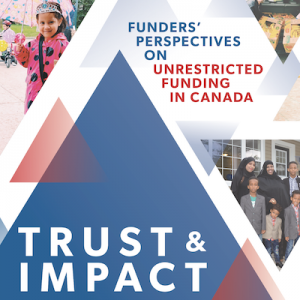 Trust & Impact, from Imagine Canada in 2022, reports on past causes of reduced unrestricted funding and how it increased quickly in Canada after the pandemic started. Through interviews with two dozen Canadian funders, the report provides an in-depth analysis of the state of unrestricted funding in Canada today.
Trust & Impact, from Imagine Canada in 2022, reports on past causes of reduced unrestricted funding and how it increased quickly in Canada after the pandemic started. Through interviews with two dozen Canadian funders, the report provides an in-depth analysis of the state of unrestricted funding in Canada today.
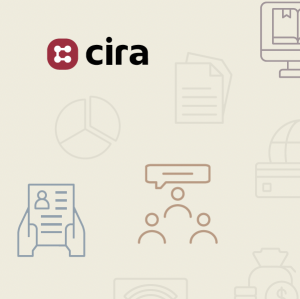 Millions of Canadians don’t have an internet connection, and of those who do, only half of rural households and just a third of First Nation households have access to basic download speed targets of 50 megabits per second (Mbps) and 10 Mbps upload. The Canadian Internet Registration Authority (CIRA) is addressing this digital inequity. CIRA manages the .CA internet domain and happens to be one of the few, non-governmental, digital-funding programs in the country — and it just released “How To Fund Digital Equity In Canada: A Guide for Funders” (2022)
Millions of Canadians don’t have an internet connection, and of those who do, only half of rural households and just a third of First Nation households have access to basic download speed targets of 50 megabits per second (Mbps) and 10 Mbps upload. The Canadian Internet Registration Authority (CIRA) is addressing this digital inequity. CIRA manages the .CA internet domain and happens to be one of the few, non-governmental, digital-funding programs in the country — and it just released “How To Fund Digital Equity In Canada: A Guide for Funders” (2022)
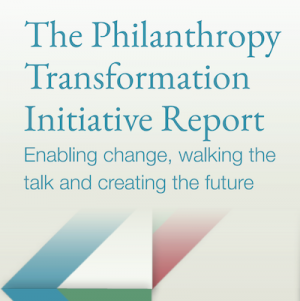 The Philanthropy Transformation Initiative Report: Enabling Change, Walking the Talk and Creating the Future (2023) outlines 10 core principles for driving transformative change in foundations and philanthropic support organizations. Published by WINGS, with the support of the Centre for Strategic Philanthropy, at Cambridge University. WINGS is a global network of more than 200 philanthropy associations, networks, academic institutions, support organizations and funders in 58 countries, all of whom are committed to strengthening philanthropy.
The Philanthropy Transformation Initiative Report: Enabling Change, Walking the Talk and Creating the Future (2023) outlines 10 core principles for driving transformative change in foundations and philanthropic support organizations. Published by WINGS, with the support of the Centre for Strategic Philanthropy, at Cambridge University. WINGS is a global network of more than 200 philanthropy associations, networks, academic institutions, support organizations and funders in 58 countries, all of whom are committed to strengthening philanthropy.
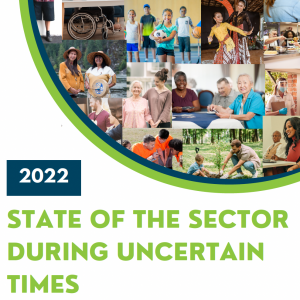 Nonprofits in Ontario are facing increased demands for services, as well as inflation, deepening financial precarity, and a staffing/volunteer crisis. In 2022, the Ontario Nonprofit Network (ONN) and l’Assemblée de la Francophonie de l’Ontario (AFO) surveyed 1,500 charities and discovered there’s an urgent need for a coordinated sector response and long-term public policy solutions to not only mitigate challenges that nonprofits are facing, but to prepare for future emergencies. 2022 State of the Sector – Policy Report contains their findings.
Nonprofits in Ontario are facing increased demands for services, as well as inflation, deepening financial precarity, and a staffing/volunteer crisis. In 2022, the Ontario Nonprofit Network (ONN) and l’Assemblée de la Francophonie de l’Ontario (AFO) surveyed 1,500 charities and discovered there’s an urgent need for a coordinated sector response and long-term public policy solutions to not only mitigate challenges that nonprofits are facing, but to prepare for future emergencies. 2022 State of the Sector – Policy Report contains their findings.
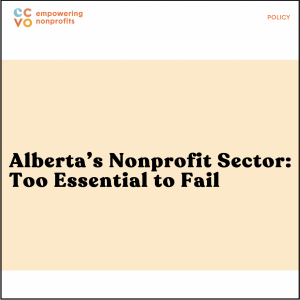 The Calgary Chamber of Voluntary Organizations (CCVO) conducted a survey of 331 Alberta nonprofits and engaged in a literature review to better understand the impacts of the pandemic on the nonprofit sector. Its report, Alberta’s Nonprofit Sector: Too Essential to Fail, synthesizes findings, revealing a sector that is under strain and undervalued.
The Calgary Chamber of Voluntary Organizations (CCVO) conducted a survey of 331 Alberta nonprofits and engaged in a literature review to better understand the impacts of the pandemic on the nonprofit sector. Its report, Alberta’s Nonprofit Sector: Too Essential to Fail, synthesizes findings, revealing a sector that is under strain and undervalued.
Archive of more reports about Covid's impact on the sector.
 Giving at a Crossroads: Generational Trends, Pandemic Uncertainties, and Unprecedented Strain on Charities. This 2022 edition of “The Giving Report,” from CanadaHelps, notes that the giving gap continues to widen (with an increased reliance on a smaller group of aging donors), but that younger generations do give and want to give more — and they have high levels of trust in charities.
Giving at a Crossroads: Generational Trends, Pandemic Uncertainties, and Unprecedented Strain on Charities. This 2022 edition of “The Giving Report,” from CanadaHelps, notes that the giving gap continues to widen (with an increased reliance on a smaller group of aging donors), but that younger generations do give and want to give more — and they have high levels of trust in charities.
 Are Canada’s Charities Ready for Digital Transformation? (2021), from CanadaHelps, presents results from a survey of 1,400 Canadian charities, including baseline data on charities’ unreadiness related to digital tools and the barriers they face in digital adoption. It shows they lack the funding and skills to maintain relevancy, and calls for urgent investment by funders and governments. The 32-page can be downloaded from CanadaHelps’ website.
Are Canada’s Charities Ready for Digital Transformation? (2021), from CanadaHelps, presents results from a survey of 1,400 Canadian charities, including baseline data on charities’ unreadiness related to digital tools and the barriers they face in digital adoption. It shows they lack the funding and skills to maintain relevancy, and calls for urgent investment by funders and governments. The 32-page can be downloaded from CanadaHelps’ website.
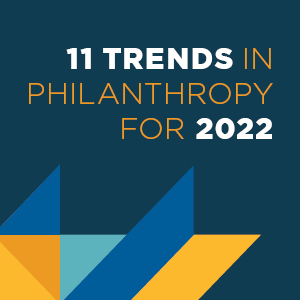 The Dorothy A. Johnson Center for Philanthropy, in the U.S., published 11 Trends in Philanthropy for 2022, which examines how nonprofits can use the growing market of cryptocurrencies, how the culture wars are affecting philanthropy, and how nonprofits can reverse the trend of declining financial donations.
The Dorothy A. Johnson Center for Philanthropy, in the U.S., published 11 Trends in Philanthropy for 2022, which examines how nonprofits can use the growing market of cryptocurrencies, how the culture wars are affecting philanthropy, and how nonprofits can reverse the trend of declining financial donations.
 Getting Connected: Funders and Digital Equity in Canada (2022), by CIRA.ca, the nonprofit that manages the .CA domain. Many Canadians still lack the speeds and skills to participate in an increasingly digital world. Based on interviews with 20 leaders in Canada’s philanthropic community, this new report shows that funders are feeling an urgency to tackle the country’s digital inequities.
Getting Connected: Funders and Digital Equity in Canada (2022), by CIRA.ca, the nonprofit that manages the .CA domain. Many Canadians still lack the speeds and skills to participate in an increasingly digital world. Based on interviews with 20 leaders in Canada’s philanthropic community, this new report shows that funders are feeling an urgency to tackle the country’s digital inequities.
 The Giving Report 2021, by CanadaHelps (April 2021), shows how and where online giving accelerated at record rates in 2020 even as total giving in Canada likely declined to 2016 levels. Produced in collaboration with Environics Analytics, the Giving Report includes trends, analysis and data from 1.1 million Canadians who donated via CanadaHelps.
The Giving Report 2021, by CanadaHelps (April 2021), shows how and where online giving accelerated at record rates in 2020 even as total giving in Canada likely declined to 2016 levels. Produced in collaboration with Environics Analytics, the Giving Report includes trends, analysis and data from 1.1 million Canadians who donated via CanadaHelps.
 Steven Ayer, of Imagine Canada, published Wake Up Call: Navigating New Pathways for Corporate Community Investment in Canada (Nov. 2020), an assessment of the social shifts that Canada is experiencing and how nonprofits and corporations can more effectively work together to address them.
Steven Ayer, of Imagine Canada, published Wake Up Call: Navigating New Pathways for Corporate Community Investment in Canada (Nov. 2020), an assessment of the social shifts that Canada is experiencing and how nonprofits and corporations can more effectively work together to address them.
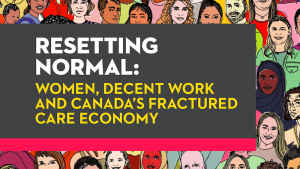 Resetting Normal: Funding a Thriving Women’s Sector and Resetting Normal: Women, Decent Work and Canada’s Fractured Care Economy, two reports (2020) by the Canadian Women’s Foundation, Ontario Nonprofit Network, Canadian Centre for Policy Alternatives, and Kathleen Lahey and Fran Faraday, show how to redesign funding models, better use gender-based analysis and reinvent our care infrastructure.
Resetting Normal: Funding a Thriving Women’s Sector and Resetting Normal: Women, Decent Work and Canada’s Fractured Care Economy, two reports (2020) by the Canadian Women’s Foundation, Ontario Nonprofit Network, Canadian Centre for Policy Alternatives, and Kathleen Lahey and Fran Faraday, show how to redesign funding models, better use gender-based analysis and reinvent our care infrastructure.
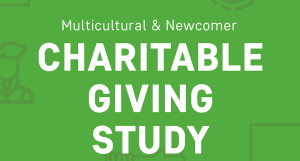 The study by Imagine Canada (2020) contains analyses from a survey of 3,130 newcomers and second-generation Canadians from South Asian, Chinese, Afro-Caribbean/African, Filipino, Arab, and Iranian backgrounds. Findings include trends about causes supported, giving methods, motivations for support, and insights.
The study by Imagine Canada (2020) contains analyses from a survey of 3,130 newcomers and second-generation Canadians from South Asian, Chinese, Afro-Caribbean/African, Filipino, Arab, and Iranian backgrounds. Findings include trends about causes supported, giving methods, motivations for support, and insights.
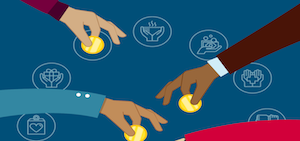 This report, Taxation and Philanthropy, from the Organisation for Economic Co-operation and Development (Nov. 2020), is a valuable resource for understanding how different countries treat philanthropy in their tax systems. It provides an overview of how 40 OECD countries tax philanthropy and provide tax incentives for giving. Also, as part of an international conference to release the report, Calum Carmichael presented his paper, Charitable ends by political means?, comparing 16 countries’ approaches in regulating the kinds and levels of political activities that philanthropic entities could undertake without losing their fiscal privileges.
This report, Taxation and Philanthropy, from the Organisation for Economic Co-operation and Development (Nov. 2020), is a valuable resource for understanding how different countries treat philanthropy in their tax systems. It provides an overview of how 40 OECD countries tax philanthropy and provide tax incentives for giving. Also, as part of an international conference to release the report, Calum Carmichael presented his paper, Charitable ends by political means?, comparing 16 countries’ approaches in regulating the kinds and levels of political activities that philanthropic entities could undertake without losing their fiscal privileges.
 Only 5% of Canadians leave a charitable gift in their wills, far fewer than in the US or Australia. From the Canadian Association of Gift Planners and Environics Analytics, this is the first report (2020) that analyzes the reasons, misperceptions and barriers related to bequests in Canada – and how fundraisers and philanthropic advisors can encourage Canadians to be more generous.
Only 5% of Canadians leave a charitable gift in their wills, far fewer than in the US or Australia. From the Canadian Association of Gift Planners and Environics Analytics, this is the first report (2020) that analyzes the reasons, misperceptions and barriers related to bequests in Canada – and how fundraisers and philanthropic advisors can encourage Canadians to be more generous.
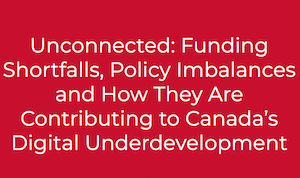 The Canadian Internet Registration Authority (CIRA) is a nonprofit best known for managing the .CA internet domain. It issued a research report, Unconnected, in Oct. 2020, that shows that digital development in Canada is underfunded, piecemeal, ad hoc and unorganized, despite stakeholders sharing many of the same goals. It suggests potential actions to address and correct Canada’s digital underdevelopment.
The Canadian Internet Registration Authority (CIRA) is a nonprofit best known for managing the .CA internet domain. It issued a research report, Unconnected, in Oct. 2020, that shows that digital development in Canada is underfunded, piecemeal, ad hoc and unorganized, despite stakeholders sharing many of the same goals. It suggests potential actions to address and correct Canada’s digital underdevelopment.
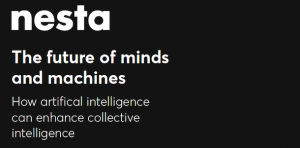 Artificial intelligence is widely predicted to transform the nonprofit sector, but how? What actually is AI — and what is its potential and its potential problems? This paper from Aleks Berditchevskaia and Peter Baeck, of NESTA, a UK-based foundation, offers a readable overview of AI and how it can be used for problem-solving and large-scale, participatory projects.
Artificial intelligence is widely predicted to transform the nonprofit sector, but how? What actually is AI — and what is its potential and its potential problems? This paper from Aleks Berditchevskaia and Peter Baeck, of NESTA, a UK-based foundation, offers a readable overview of AI and how it can be used for problem-solving and large-scale, participatory projects.
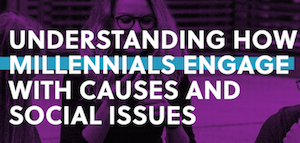 Millennials (born 1980-2000) are the largest, most diverse cohort in U.S. history, and their impact on philanthropy, activism and leadership in the nonprofit sector is already profound. In the absence of accessible, comprehensive Canadian data, we turn to this US report from Achieve and the Case Foundation in 2020. It surveyed more than 150,000 Millennials over ten years, making it the largest body of data about this group.
Millennials (born 1980-2000) are the largest, most diverse cohort in U.S. history, and their impact on philanthropy, activism and leadership in the nonprofit sector is already profound. In the absence of accessible, comprehensive Canadian data, we turn to this US report from Achieve and the Case Foundation in 2020. It surveyed more than 150,000 Millennials over ten years, making it the largest body of data about this group.
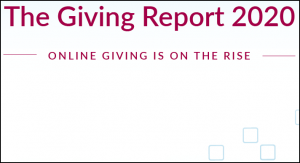 This report by CanadaHelps.org contains new data and analyses showing that, while fewer Canadians are donating, online giving grew rapidly in 2017-2019. The annual report provides knowledge and insights to help Canadians understand the charitable sector and its impact on Canada.
This report by CanadaHelps.org contains new data and analyses showing that, while fewer Canadians are donating, online giving grew rapidly in 2017-2019. The annual report provides knowledge and insights to help Canadians understand the charitable sector and its impact on Canada.
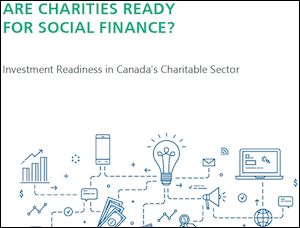 Are Charities Ready for Social Finance? is by Adam Jog, Imagine Canada (2020). This is the first survey (of more than 1,000 Canadian charities) about the barriers to engagement with social finance tools. It provides fresh insights for identifying those parts of the charitable sector likely to contain ready participants, those that will need assistance to engage, and those for which social finance is likely not a good fit.
Are Charities Ready for Social Finance? is by Adam Jog, Imagine Canada (2020). This is the first survey (of more than 1,000 Canadian charities) about the barriers to engagement with social finance tools. It provides fresh insights for identifying those parts of the charitable sector likely to contain ready participants, those that will need assistance to engage, and those for which social finance is likely not a good fit.
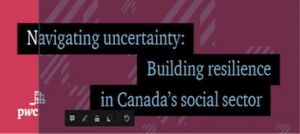 Navigating uncertainty, a report from PricewaterhouseCoopers (PwC), in English and French (Nov. 2020), provides insights for recovery and interviews with 548 sector leaders who stress the need to invest in upskilling and digital, collaborative strategies. The business case for such investment is clear, but the focus is still on short-term risk. This PwC report is a checklist that will help boards of directors to shift, empower and future fit their organizations.
Navigating uncertainty, a report from PricewaterhouseCoopers (PwC), in English and French (Nov. 2020), provides insights for recovery and interviews with 548 sector leaders who stress the need to invest in upskilling and digital, collaborative strategies. The business case for such investment is clear, but the focus is still on short-term risk. This PwC report is a checklist that will help boards of directors to shift, empower and future fit their organizations.
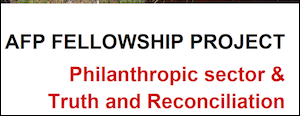 After the Truth and Reconciliation Commission, in Canada, philanthropic foundations signed a Declaration of Action, but progress has been mixed since then. A 2019 report from Sharon Redsky (during a fellowship with the Association of Fundraising Professionals) assesses the challenges and suggests ways forward. Download here: http://www.afpinclusivegiving.ca/wp-content/uploads/2019/03/Sharon-Redsky-Final-Project.pdf.
After the Truth and Reconciliation Commission, in Canada, philanthropic foundations signed a Declaration of Action, but progress has been mixed since then. A 2019 report from Sharon Redsky (during a fellowship with the Association of Fundraising Professionals) assesses the challenges and suggests ways forward. Download here: http://www.afpinclusivegiving.ca/wp-content/uploads/2019/03/Sharon-Redsky-Final-Project.pdf.
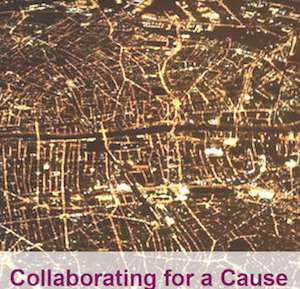 Collaboration has become the new norm in philanthropy and among nonprofits, but as anyone who has tried to build collaborative, cause-related networks knows, it isn’t easy. Collaborating for a cause: How cause-related networks multiply the impact of philanthropy, a report from NPC (Consulting), in the UK, provides valuable recommendations and case studies of network building that are applicable in Canada.
Collaboration has become the new norm in philanthropy and among nonprofits, but as anyone who has tried to build collaborative, cause-related networks knows, it isn’t easy. Collaborating for a cause: How cause-related networks multiply the impact of philanthropy, a report from NPC (Consulting), in the UK, provides valuable recommendations and case studies of network building that are applicable in Canada.
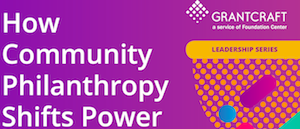 This essential guide from Jenny Hodgson and Anna Pond advances models of community philanthropy that shift power. The report offers advice to foundations and other funders on how to be constructive players in this movement, and advice to community leaders as to what to ask of funders. This is a 2018 report that’s an MPNL favourite.
This essential guide from Jenny Hodgson and Anna Pond advances models of community philanthropy that shift power. The report offers advice to foundations and other funders on how to be constructive players in this movement, and advice to community leaders as to what to ask of funders. This is a 2018 report that’s an MPNL favourite.
Banner photo is courtesy of Dong Seok Jeong.
Monday, January 22, 2024 in Archive of Top Reports about Our Sector
Share: Twitter, Facebook



